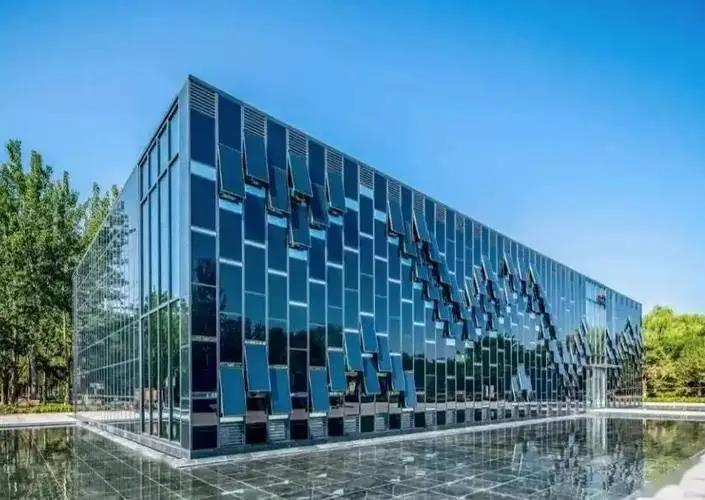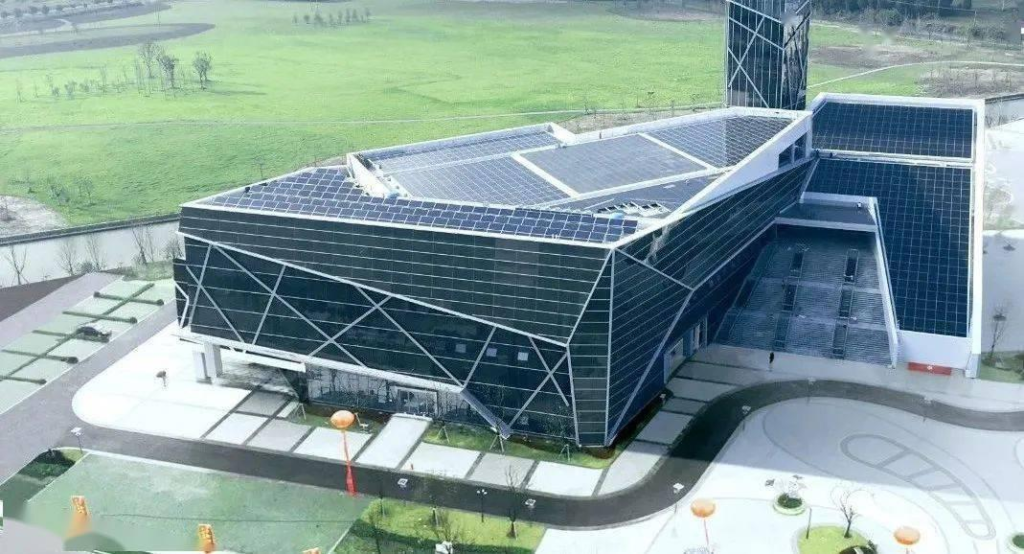The large-scale use of fossil energy has allowed mankind to transition from the farming age to the industrial age, and today’s information age also needs a steady stream of energy for support. However, the high carbon emissions and high pollution brought by fossil energy have caused major changes in the global climate in less than 200 years. Have friends in the north realized that in the past two years, there has been significantly more precipitation in northern my country, and there have been more catastrophic floods in cities. In April this year, the highest temperature in India reached an astonishing 55°C. The risks brought by environmental and climate issues to society, enterprises and individuals are increasing. Under the initiative of the “Paris Agreement”, global carbon dioxide emissions need to be curbed immediately and reduced by 80% in 2050 compared to 1990- 95% target. According to the analysis of the research report of Tsinghua University in my country: by 2050, the proportion of non-fossil energy in primary energy consumption in my country should exceed 70%, and non-fossil energy electricity will account for about 90% of the total power generation. It can be seen that under the premise that my country’s energy strategic goals remain unchanged, solar photovoltaic power generation will usher in a trillion-level market size in the next 30 years. In the past 10 years, from 2010 to 2021, the compound growth rate of China’s photovoltaic installed capacity was 63.7%. In 2021, China’s new installed photovoltaic capacity was 54.9GW. China has also become the country with the largest installed capacity of renewable power generation in the world. Before continuing to read, please also understand the framework of the following figure.
1. Centralized photovoltaic and distributed photovoltaic
Centralized photovoltaic power plants are the initial application form of domestic photovoltaic power generation. Centralized photovoltaic power station refers to the large-scale photovoltaic power station built intensively by using the vast space and relatively stable solar energy resources in desert areas. It has the advantages of flexible site selection, small space restrictions, relatively easy expansion, low operating cost, and convenient centralized management. Make full use of the positive peak-shaving characteristics of solar radiation and electric load to play the role of peak-shaving. However, there are defects in the actual application of centralized photovoltaics. my country’s economic center of gravity is in the southeast coastal area, and its electricity demand is much higher than that in the sparsely populated northwest area. Since the power transmission and distribution capacity of the grid is much smaller than the power production capacity of centralized photovoltaics, it has led to a serious “light abandonment” phenomenon. Although my country’s UHV technology has alleviated the problem of power transmission from west to east in recent years, the overall situation is still not optimistic.

Therefore, in order to alleviate the pressure on the construction of centralized power plants, the country vigorously advocates the solution of distributed photovoltaic power plants. Distributed photovoltaic power plants generally refer to power generation systems with small installed capacity and arranged near users. It is generally connected to a power grid with a voltage level of 10 kV or lower, and has the characteristics of relatively small output power, easy promotion, low pollution, and can alleviate the power shortage in some areas. In recent years, with the vigorous promotion of distributed photovoltaics, the proportion of centralized photovoltaic installed capacity has been declining. In terms of total volume, the domestic centralized photovoltaic installed capacity will still be 199.1GW in 2021, accounting for 65.0% of the total domestic photovoltaic installed capacity. However, in terms of increment, in 2021, the new installed capacity of distributed photovoltaic in China will be 29GW, accounting for 55% of the total newly installed photovoltaic capacity in the whole year, surpassing the installed capacity of centralized photovoltaic for the first time in terms of increment. The figure below shows the cumulative installed capacity of centralized photovoltaics and distributed photovoltaics since the “13th Five-Year Plan”. It is obvious that distributed photovoltaics will become the dominant photovoltaic power generation in the future.
2. BAPV and BIPV
With the gradual development of distributed photovoltaic power plants in cities, in order to save land for photovoltaic facilities, buildings and distributed photovoltaics are perfectly combined, so urban buildings have become the main carrier of solar photovoltaics. The “Notice on the Pilot Program for the Development of Distributed Photovoltaic Roofs in the Whole County” issued by the China Energy Administration pointed out that the proportion of photovoltaic power generation that can be installed on the total roof area of party and government organs is not less than 50%; the proportion of photovoltaic power generation that can be installed on the total roof area of public buildings is not Less than 40%; the proportion of photovoltaic power generation installed on the total roof area of industrial and commercial factories is not less than 30%; the proportion of photovoltaic power generation installed on the total roof area of rural residents is not less than 20%. This policy has further accelerated the application of distributed photovoltaics in buildings. At present, there are two main forms of photovoltaic buildings: BAPV (Building Attached Photovoltaic), also known as “installed” solar photovoltaic buildings and BIPV (Building Integrated Photovoltaics), also known as building photovoltaic integration.

The main form of BAPV is to attach the photovoltaic system to the surface of the building. It is mainly used on the roof, and the ordinary photovoltaic module is fixed on the color steel tile or the cement roof through the bracket. BIPV integrates photovoltaic power generation devices into buildings and integrates them into one. In addition to roofs, it can also be applied to curtain walls/shading/greenhouses and other scenarios. The following table shows the differences between BAPV and BIPV in various aspects.
It can be seen from the table that BIPV is superior to BAPV in terms of design, material, performance, construction, maintenance and cost. It stands to reason that BIPV should be completely replaced by BIPV. However, the actual data shows that in 2019 and 2020, the newly installed capacity of BIPV in the world is 1.15GW and 2.3GW respectively, accounting for only 0.95% and 1.73% of the newly installed photovoltaic capacity in that year; among them, the installed capacity of BIPV in China in 2020 is 709MW, accounting for only 4.5% of domestic distributed photovoltaic installed capacity, accounting for 1.5% of the total new photovoltaic installed capacity. Why did BIPV only occupy such a small market share after defeating BAPV? In fact, this mainly stems from the application scenarios of building photovoltaics. Building photovoltaics are divided into incremental market and stock market. BAPV and BIPV have different focuses.
BAPV is mainly used in stock renovation: (1) Easy to approve, building renovation needs to be approved by relevant departments, and the difficulty of approval can be reduced without changing the original building structure; (2) Cost-effective, if the existing roof is in good condition, after simple treatment (3) The construction period is short, and the original roof does not need to be demolished, which reduces the construction time; (4) The damage to the original building is reduced, and the reconstruction of the roof is easy to damage some old building structures, and the erection of the bracket can reduce the degree of structural change.

BIPV is more suitable for new buildings. The main points are as follows: (1) It is easy to check and accept. New buildings must meet the mandatory building standards, and the integrated building structure is easy to accept. ) The construction precision is high, and the new large-scale buildings are uniformly designed by the design institute, and the requirements for the building structure are clear, which can reduce the hidden danger of accidents in the later stage; (4) Increase the photovoltaic installed capacity, and the roof and facade can be designed to use BIPV to increase the energy-saving effect of the building; (5) The design consistency is strong, improving the aesthetics of the building.
Because my country currently has an existing construction area of about 80 billion square meters, and the new construction area in 2021 is only 3.15 million square meters, the huge difference between the incremental and stock buildings has caused a significant difference in the market size of BAPV and BIPV. But in the future, the market size of BIPV will continue to expand with the large-scale use of new buildings.
3. Crystalline silicon battery and thin film battery
At present, BIPV photovoltaic modules can be divided into building material-type components and component-type components according to the form of expression. Building-material-type components include photovoltaic tiles, photovoltaic transparent roofs, photovoltaic glass curtain walls, etc., and component-type components mainly include photovoltaic sunshades and photovoltaic canopies. BIPV photovoltaic modules can be divided into two types according to battery types: crystalline silicon cell photovoltaic modules and thin film cell photovoltaic modules, among which thin film modules mainly include amorphous silicon type, cadmium telluride (CdTe) type, copper indium gallium selenide (CIGS) type and The conversion efficiency and power per unit area of the latest perovskite-type and thin-film modules are currently research hotspots in the scientific community. The following table compares the performance of crystalline silicon photovoltaic modules and thin film photovoltaic modules.
Crystalline silicon batteries are the mainstream, while thin-film batteries are limited by the mass production efficiency and cost of batteries, and the current volume is still small. However, compared with traditional crystalline silicon solar energy, thin-film power generation products have the following advantages: (1) The theoretical conversion efficiency is higher. Thin film batteries (such as CdTe) have a higher theoretical photoelectric conversion efficiency of about 30%; (2) low temperature coefficient. The temperature coefficient of thin-film batteries is about half lower than that of crystalline silicon solar cells. The low temperature coefficient means that the output power of battery components is less affected by temperature. Therefore, thin-film batteries are more suitable for harsh application environments such as high temperature, desert and humid areas. (3) Low light effect is good. Thin-film batteries are superior to crystalline silicon batteries in power generation in low-light environments such as early morning, evening, and rainy days, and have a longer power generation time than crystalline silicon batteries.
The performance characteristics determine the application scenarios of crystalline silicon and thin film photovoltaic modules. Crystalline silicon components currently have the characteristics of high conversion efficiency, low cost, and high power per unit area, so roofs currently mainly use crystalline silicon components. The outdoor performance of thin-film modules is obviously better: (1) There are architectural aesthetic requirements, and the single color of crystalline silicon modules cannot meet the requirements. The color system of thin-film modules can be adjusted, and the adaptation design can be changed according to customer requirements; (2) There are requirements for light transmission. , compared with crystalline silicon components, the light transmittance of thin film components can be greatly adjusted within the range of 0~70%, avoiding the extra lighting caused by light transmission to consume excess power; (3) There are requirements for the working temperature of components, and crystalline silicon components The high temperature coefficient will generate more heat when working, and the heat will be conducted to the room, which will cause the room to cool down and consume extra power. Therefore, the membrane module is more suitable for installation on the facade of the building.
4. Market Size
For the building photovoltaic market, it needs to be analyzed in two parts: (1) the stock market, that is, existing buildings; (2) the incremental market, that is, new buildings.
In existing buildings, considering that the installation of photovoltaic panels on the facade of the building will affect the structural safety of the building, the market for existing buildings is generally only on the roof of the building. Regardless of the roof of residential, industrial, commercial or public buildings, if BIPV modules are used for renovation, the process of dismantling the original roof structure will be increased, which will not only increase the construction cost, but also bring damage to the building structure, resulting in subsequent water seepage of the building And other hidden dangers. Therefore, existing buildings basically use BAPV, an independent photovoltaic module attached to the roof of the building, and its photovoltaic array can be installed at the best angle of light incidence to maximize power generation.
For new buildings, whether it is a residential or commercial or public building, if you want to install photovoltaic modules on the facade, BIPV has many advantages compared with BAPV due to its light transmittance, low temperature coefficient, weak light, airtightness and light weight. The advantage is definitely the best choice, not only to improve the energy saving of the building during operation, but also to ensure the aesthetics of the building. Regarding the roof of new buildings, we need to consider residential buildings, industrial, commercial and public buildings separately. Since the roof of a new residential building does not require light transmission, and the structure of the roof does not affect the appearance, developers are more willing to choose lower-cost BAPV as the first choice for roof photovoltaic modules. For the roof of industrial, commercial and public new buildings, economic benefits and safety are the main factors in choosing the type of photovoltaic modules. Compared with residential owners, industrial and commercial customers pay more attention to installation cost, power generation efficiency, service life and maintenance conditions, and renewable electricity is generally not included in dual control of energy consumption. Investors pay more attention to investment returns and building property rights. Industrial factory buildings have rich roof resources, large construction areas, high electricity consumption, high electricity prices, and a large proportion of self-consumption. The above characteristics determine that more roof photovoltaic modules invested in industrial and commercial buildings will go Consider using BIPV-type modules with short payback periods and potentially higher yields.
According to the existing and new building land area, residential and industrial and commercial building density, renovation ratio, penetration rate, and STC (standard test condition) power, it is estimated that the domestic BAPV and BIPV photovoltaic installed capacity in the next five years.
It is estimated that in 2021, the new installed capacity of domestic distributed photovoltaics will be 29GW, an increase of 87% year-on-year; among them, the newly installed capacity of household photovoltaics will be 21.5GW, an increase of 112.9% year-on-year, and will continue to maintain a relatively high growth rate in the future. Through the calculation of the domestic existing stock building market and the future incremental building market space, we expect that by 2025, the installed capacity of domestic building photovoltaic roofs will reach 237.42GW, of which the cumulative installed capacity of BIPV roofs will reach 28.66GW, and the cumulative installed capacity of BAPV roofs will reach 209.76GW , accounting for 12.07% and 87.93% of the total installed capacity respectively, the CAGR (compound annual growth rate) of new building photovoltaic installed capacity from 2021 to 2025 will exceed 20%; building photovoltaic facades are dominated by BIPV, and the cumulative installed capacity is expected to reach 10.63 GW.






